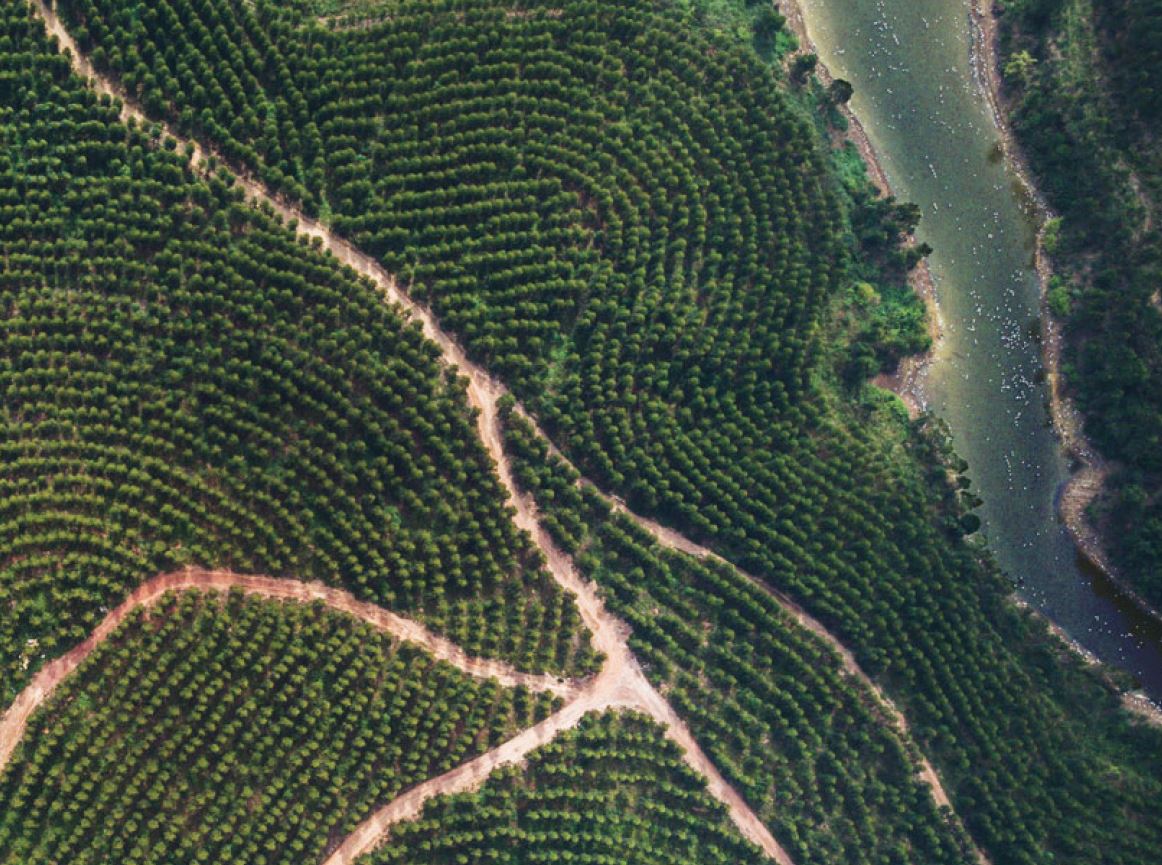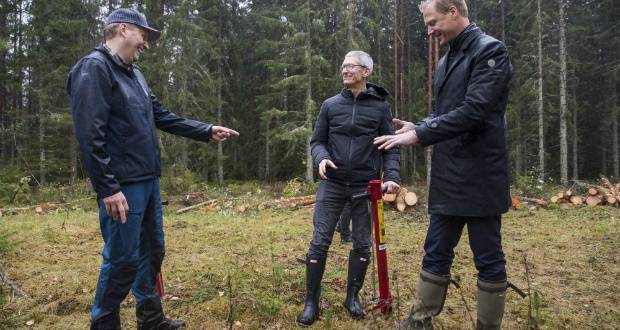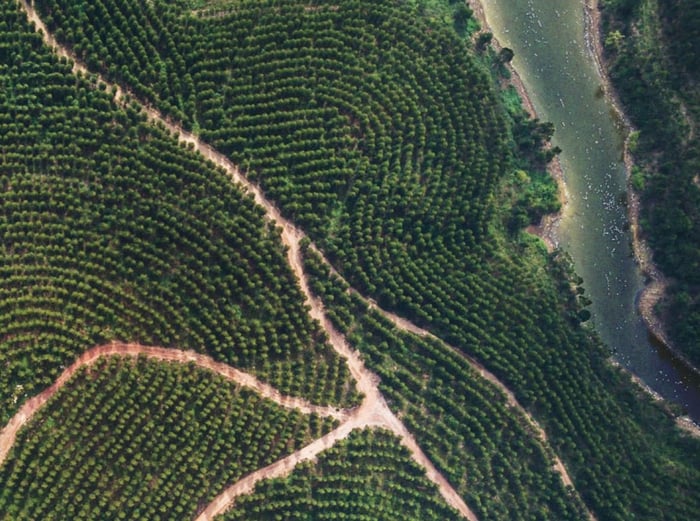3 min read
Apple Promotes Awareness, Initiatives for Global Working Forests
John Greene
:
October 30, 2017

Public conversations about forestry can oftentimes be contentious, emotionally-charged mudslinging matches that result in neither changed hearts nor wiser minds. But when top-tier global brands embrace sustainable forestry practices and promote working forests, it paves the way for more civil discussions about developing innovative products while protecting the planet’s natural resources.
Anyone who has ever purchased a product from California tech giant Apple knows that the company fosters its customer relationships by creating unique experiences, which is embodied in its product designs but extends to its product packaging. Apple’s paper packaging, user guides and other printed materials have a minimalist, clean feel that accentuates the products themselves—a deliberate decision by the company’s founder, Steve Jobs.
American Design, Swedish Paper
Apple has a long relationship with Swedish paper manufacturer Iggesund Paperboard, which produces Invercote, the material used in Apple’s distinctive packaging. Legend tells that it was Steve Jobs who initially decided that Iggesund would supply the material for Apple’s packaging. Employees travelled the world and collected potential packaging materials and when the samples were presented at Apple’s headquarters, Jobs pointed to Invercote and said, “This is the one we want.”
Iggesund is part of the Holmen forest industry group and is at the forefront of forest sustainability, which is central to Apple’s mission of maximizing energy efficiency and minimizing its carbon footprint.
Holmen produces more than 30 million tree seedlings annually to meet Sweden’s legislated requirements for replanting after felling, and it has repeatedly ranked among the world’s most sustainable companies. Apple’s CEO, Tim Cook, recently visited forests in northern Sweden where he planted a tree in Iggesund’s forest, and he was able to follow the whole supply chain process from forest management to finished packaging.

Apple CEO Tim Cook tries his hand at the manual job of planting trees surrounded by Johan Granås from Iggesund Paperboard, and Henrik Sjölund of the Holmen Group. (Photo: Iggesund)
“For Holmen it is self-evident to start with sustainable forestry,” said Holmen’s chief executive, Henrik Sjölund. “We grow trees with an 80 to 90-year time frame, with the timber being used to build houses. We make the paperboard from pulpwood from the forest and chips from the sawmill. We have been harvesting and maintaining Swedish forests in a traditional and sustainable way for the past 400 years. Everything starts with long-term sustainable forestry. For us it is natural to work in a climate-compensating way and based on a value chain where all stages are important.”
Forestry Initiative Spans the Globe
Apple began its forestry initiative in 2015 with the purchase of 36,000 acres of vulnerable forestland in Maine and North Carolina through The Conservation Fund’s Working Forest Fund. Timber yields from the two US states amounted to 13,000 metric tons of wood—enough fiber to produce roughly 30 percent of Apple’s product packaging that year. The company said it has now created enough sustainable forestland to cover all paper packaging for its products, and it is constantly developing smaller packaging designs and increasing the ratio of recycled paper used in its products.
In fiscal year 2016, Apple used 131,000 metric tons of fiber, of which 62 percent was recycled, 38 percent was virgin fiber from responsibly managed sources, and less than 1 percent was virgin fiber that did not comply with the company’s sustainable fiber specification, according to the company’s 2017 Environmental Responsibility Report.
Apple's Chinese forestry program also began in 2015 as a commitment to establish one million acres of responsibly-managed forest by 2020, and the Forest Stewardship Council (FSC) has certified approximately 320,000 acres of Chinese working forests over the last two years. The Responsibility Reports says, “The progress was made through collaboration with two companies in Hunan and Guangxi provinces, one of which will be the largest FSC-certified plantation area in the Chinese pulp and paper sector. WWF worked with both companies to create forest management plans and train their employees to identify High Conservation Value Forest—both necessary for FSC certification.”

An aerial view of eucalyptus forests in Guangxi Province, China. In partnership with WWF, Apple has transitioned 320,000 acres of forest in China into sustainable management. (Photo: Apple, 2017 Environmental Responsibility Report)
Apple’s Responsibility Report also notes that, “When we use virgin paper in our packaging, our suppliers must source it from sustainably managed forests or controlled wood sources. And we conduct regular audits to ensure that they adhere to our specifications. In fiscal year 2016, over 99 percent of the paper used in our packaging and corporate offices was from either sustainably managed forests or controlled wood or recycled sources.”
“We continue to protect and create sustainable working forests because when properly managed, they can provide abundant resources for a long time. In addition to specifying that all of our virgin fiber be sourced from responsibly managed forests, we also wanted to make sure we weren’t diminishing the world’s supply of responsibly sourced paper. So we set a goal to protect or create enough responsibly managed forests to cover all of our product packaging needs. In 2017, we met this goal for the first time: Yearly production from our forest conservation projects is now greater than the amount of virgin fiber used in Apple’s product packaging during fiscal year 2016. As our paper demands grow and change, we will continue protecting and creating enough responsibly managed forests to cover all our packaging needs.”
Apple's investment in sustainable forestry and responsible sourcing, as well as its larger dedication to environmental accountability, is a cornerstone of the company’s brand. To that end, Apple’s commitment to global forestry helps to solidify a meaningful reputation with existing customers, and effectively tell its brand story to prospective customers.





